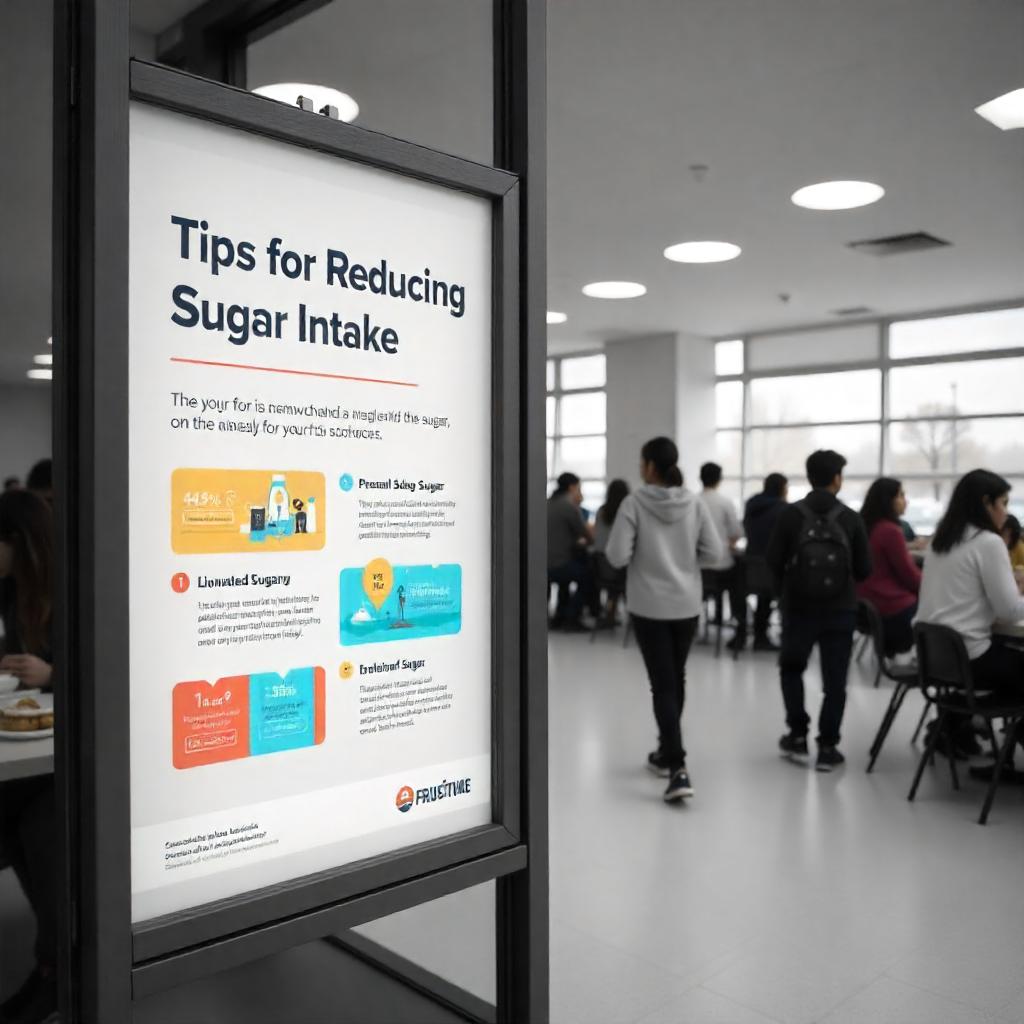Tips For Reducing Sugar Intake
Reducing your sugar intake is a great way to improve your overall health and well-being. Excess sugar can contribute to weight gain, diabetes, heart disease, and other health issues, so being mindful of your sugar consumption is an important step toward a healthier lifestyle. Here are some practical tips for reducing sugar intake:
1. Read Labels Carefully
-
Why It Helps: Many packaged foods, even those marketed as “healthy,” contain hidden sugars. By reading the labels, you can better understand how much sugar is in your food and make more informed choices.
-
How to Do It:
-
Check the nutrition label for “added sugars” and be aware of other names for sugar, like high-fructose corn syrup, cane syrup, and honey.
-
Look for products with little or no added sugars, and choose options that are high in fiber and protein, which can help reduce sugar cravings.
-
2. Cut Back on Sugary Beverages
-
Why It Helps: Sugary drinks like soda, energy drinks, and sweetened coffee or tea are major sources of hidden sugar and provide little nutritional value.
-
How to Do It:
-
Swap sugary beverages for water, sparkling water, herbal tea, or unsweetened iced tea.
-
If you drink coffee or tea, try to reduce or eliminate the sugar you add. Gradually reduce the amount of sugar over time if you’re used to having it in your drinks.
-
Consider adding a slice of lemon or cucumber to water for flavor, or try naturally flavored waters (without added sugar).
-
3. Choose Whole Fruits Over Fruit Juices
-
Why It Helps: Fruit juices, even 100% juice, can be loaded with sugar and lack the fiber found in whole fruits. The fiber helps slow the absorption of sugar and keeps you feeling fuller longer.
-
How to Do It:
-
Opt for whole fruits like apples, berries, oranges, and pears instead of fruit juice.
-
If you crave a sweet drink, try blending whole fruits with ice and water to make a natural smoothie.
-
4. Cook More at Home
-
Why It Helps: Homemade meals give you full control over what goes into your food, helping you avoid hidden sugars in restaurant meals and pre-packaged foods.
-
How to Do It:
-
Experiment with cooking meals from scratch using whole, unprocessed ingredients.
-
Use natural sweeteners like stevia or monk fruit if you need to add sweetness to recipes.
-
Find healthier substitutes for sugary sauces, such as using balsamic vinegar or homemade dressings instead of store-bought sugary sauces.
-
5. Use Spices for Flavor
-
Why It Helps: Spices can add sweetness and flavor to your food without the need for added sugar.
-
How to Do It:
-
Use cinnamon, nutmeg, or vanilla to add a sweet taste to oatmeal, smoothies, or baked goods.
-
Experiment with ginger, cardamom, or cloves to create warm, aromatic flavors in your meals.
-
Adding herbs like mint or basil to fruit salads or drinks can give you a refreshing twist without needing added sugars.
-
6. Snack on Nuts, Seeds, and Whole Grains
-
Why It Helps: Nuts, seeds, and whole grains provide long-lasting energy and prevent blood sugar spikes, which can happen after consuming sugary snacks.
-
How to Do It:
-
Choose snacks like almonds, walnuts, sunflower seeds, or pumpkin seeds. Pair them with a piece of fruit for a balanced snack.
-
Choose whole-grain options like oats or quinoa for meals and snacks instead of processed grains that may contain added sugar.
-
7. Gradually Reduce Sugar in Recipes
-
Why It Helps: Many recipes, especially baked goods, call for sugar that can often be reduced without compromising taste or texture.
-
How to Do It:
-
Reduce the sugar in baking recipes by 1/4 to 1/3, and experiment with natural alternatives like applesauce or mashed bananas for added sweetness.
-
If you’re making savory dishes like sauces, soups, or dressings, reduce or eliminate added sugar, which is often used to balance acidity.
-
8. Limit Processed and Packaged Snacks
-
Why It Helps: Processed snacks like cookies, cakes, granola bars, and chips are often loaded with hidden sugars and unhealthy fats.
-
How to Do It:
-
Replace sugary snacks with healthier alternatives like fresh fruits, veggies with hummus, or a handful of nuts.
-
If you’re craving something sweet, opt for dark chocolate (70% cocoa or higher) in moderation. It typically has less sugar than milk chocolate.
-
9. Stay Full with Protein and Fiber
-
Why It Helps: Protein and fiber-rich foods keep you full longer and help stabilize blood sugar levels, reducing cravings for sugary snacks.
-
How to Do It:
-
Incorporate protein-rich foods like eggs, lean meats, beans, or tofu into your meals.
-
Add high-fiber foods such as vegetables, whole grains, legumes, and seeds to your diet to promote fullness and support digestion.
-
10. Stay Hydrated
-
Why It Helps: Dehydration can sometimes be mistaken for hunger, leading to cravings for sugary foods.
-
How to Do It:
-
Drink plenty of water throughout the day. Keep a water bottle with you as a reminder to stay hydrated.
-
Herbal teas or water infused with fruits and herbs are great alternatives if you get bored of plain water.
-
11. Control Your Sweet Tooth with Healthier Alternatives
-
Why It Helps: Sometimes, you need a sweet treat to satisfy your cravings. Choosing healthier alternatives can help satisfy your desire for sweetness without consuming excess sugar.
-
How to Do It:
-
Opt for homemade fruit-based desserts or baked goods that use less sugar and are sweetened naturally.
-
Try yogurt with fresh fruit, a drizzle of honey, or a small piece of dark chocolate as a healthier sweet treat.
-
Use sugar substitutes like stevia or erythritol for baking or sweetening drinks, but make sure to use them in moderation.
-
12. Be Mindful of “Low-Fat” or “Diet” Foods
-
Why It Helps: Many low-fat or diet foods contain added sugars to enhance flavor, which can often make them less healthy than they seem.
-
How to Do It:
-
Check the labels of low-fat or diet products, and avoid those with high amounts of added sugar or artificial sweeteners.
-
Opt for whole, unprocessed foods that are naturally low in fat, like fruits, vegetables, and lean proteins.
-
13. Plan Your Meals and Snacks
-
Why It Helps: Having a meal plan in place helps you avoid impulse decisions that might lead to sugary snacks.
-
How to Do It:
-
Prepare your meals and snacks ahead of time to ensure you have healthy options available when hunger strikes.
-
Having a balanced meal or snack ready will reduce your chances of reaching for sugary foods out of convenience.
-
14. Find Support and Accountability
-
Why It Helps: Having someone to support you on your journey to reduce sugar intake can help keep you motivated.
-
How to Do It:
-
Share your goals with a friend or family member, or join a health group focused on cutting back on sugar.
-
Hold yourself accountable by tracking your progress, celebrating small victories, and staying consistent with your goals.
-





